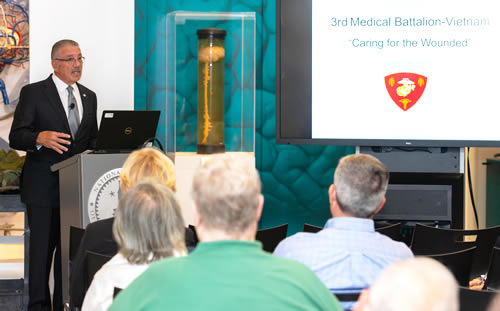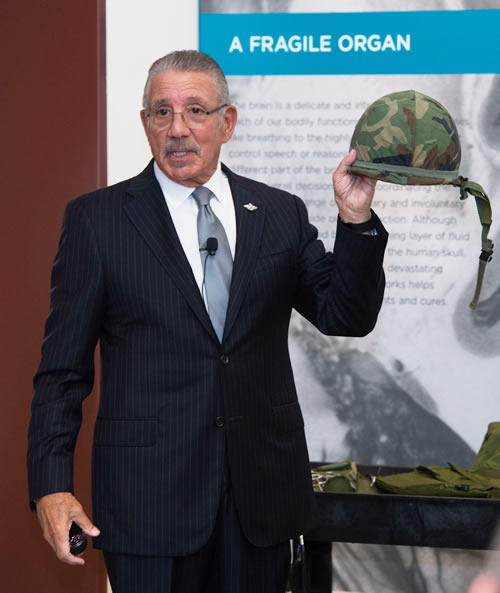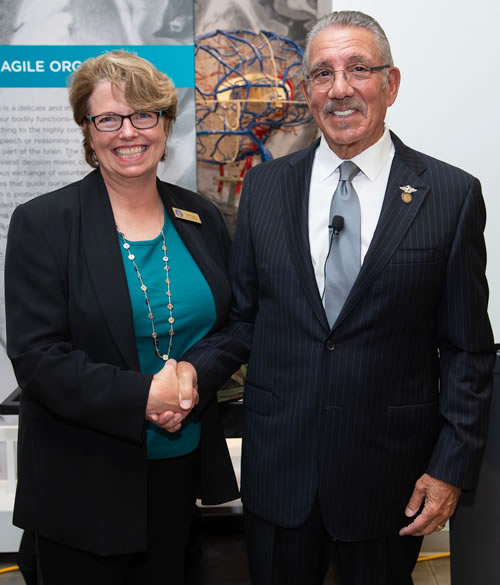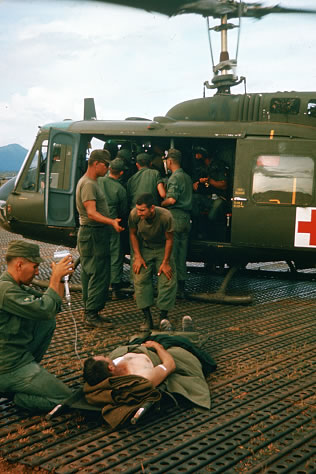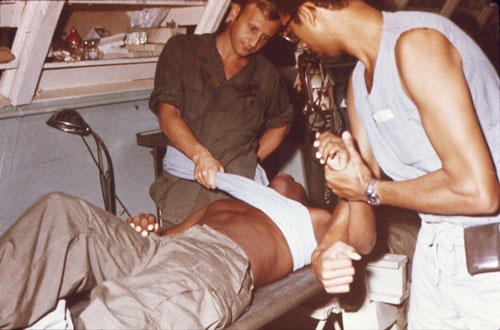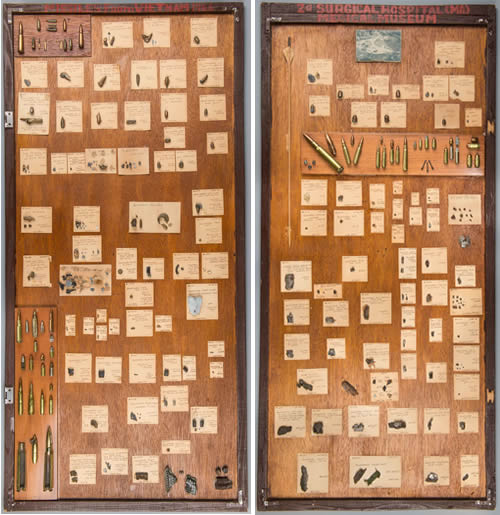Vietnam Veteran Corpsman Shares Wartime Medicine Memories on 50th Anniversary of Deployment
By Lauren Bigge
NMHM Public Affairs Coordinator
Vietnam War veteran Al Naar, a Navy corpsman, shared his personal reflections on caring for the wounded with the National Museum of Health and Medicine's (NMHM) Medical Museum Science Café audience on May 29, the 50-year anniversary of his deployment to Vietnam. NMHM is a partner of the U.S. Vietnam War Commemoration, instituted under the auspices of the Department of Defense.
Naar arrived in Da Nang, Vietnam on May 29, 1968 and joined the 3rd Medical Battalion, 3rd Marine Division. He spent most of his 12-month tour of duty at Quang Tri Combat Base, but also served at Phu Bai. "I trained as a combat corpsman, but since I was an operating room technician, I worked in surgery," Naar said. "There was nothing that could prepare you for what we were going to see in Vietnam."
CH-46 and CH-47 helicopters brought the wounded to "3rd Med," at which point the triage surgeon would evaluate all wounds. This ensured that the wounded received care according to severity of injury. The Navy corpsmen worked as a team to run all departments, including the operating rooms. They were responsible for replenishing intravenous fluids, administering medication, X-raying patients, changing dressings on wounds, and more. "Corpsmen were the infrastructure of the medical battalion," he said, noting that doctors and corpsmen worked side-by-side.
During the summer of 1968, they moved north to be closer to combat operations because it had been taking too long for the wounded to get to the battalion for treatment. Since the 3rd Med did not have space for recovering patients due to the constant arrival of more wounded, Naar explained, they operated and stabilized their patients for a day or two before transfer to Japan for definitive treatment. The battalion's five operating rooms were in use day and night. He recalled being awake for three days at one point because the battalion received so many wounded. They triaged more than 100 patients in a single day. Without such tools as heart monitors and defibrillators or antibiotics and medications common in today's battlefield medicine environment, practicing medicine in Vietnam was challenging.
Some injuries they triaged were preventable: 3rd Med treated numerous head and chest wounds caused by bullets or shell fragments when Marines were not wearing their helmets, or had their flak jacket body armor unzipped in the intense heat and humidity of Vietnam.
In advance of the Science Café, NMHM installed a full-size photographic reproduction of then-Major (Dr.) Norman Rich's 1966 projectile collection from An Khe, Vietnam. Rich served in Vietnam from 1966-1967 and founded the "Second Surgical Hospital Medical Museum." Rich's collection is composed of bullets and fragments removed from wounded soldiers and civilians, documenting wound ballistics. The fragment exhibit was presented at an American Medical Association conference in Chicago in 1966. Rich's study on wound ballistics spurred development of the Wound Data and Munitions Effectiveness Team (WDMET), the definitive study of wound ballistics during the Vietnam War. Also on temporary exhibit were a Vietcong shotgun-shell booby trap, which was triggered when a soldier stepped on the wire bale projecting above ground, and Vietcong punji sticks, alongside photographs documenting the nature of injuries caused by the punji sticks.
Photographs from two Vietnam War collections at the museum were included in the temporary exhibit, including several from Dr. Rich's collection. Photographs from the collections of Dr. Kenneth Swan (U.S. Army Reserve, retired) and Army Colonel James Hansen were featured, as well.
Naar said he feels fortunate that he came home alive. "Almost 700 corpsmen died in Vietnam," he said. He acknowledged that 3rd Med saved more casualties than they lost in Vietnam, yet the losses still weigh on his mind. "When you lose one, you lose a lot," Naar said. He felt burnt out at the end of his tour of duty in 1969, so he turned down promotion and financial incentives that were offered to entice him to extend his service in the war zone another four months.
"Al Naar's presentation provided a glimpse into the everyday challenges of a hospital corpsman during the Vietnam War," said Andrea Schierkolk, NMHM public programs manager. "This program served as a way of highlighting Mr. Naar's service, and the service of many others like him who cared for the wounded during the war. As a partner in the U.S. Vietnam War Commemoration, NMHM was proud to salute his service as well as to share a selection of historical images and artifacts from the museum's Vietnam War archival and historical collections."
NMHM's Medical Museum Science Cafés are a regular series of informal talks that connect the mission of the Department of Defense museum with the public. The NMHM was founded as the Army Medical Museum in 1862 and is an element of the Defense Health Agency Research and Development Directorate. For more information on upcoming events, call 301-319-3303 or visit www.medicalmuseum.mil.
